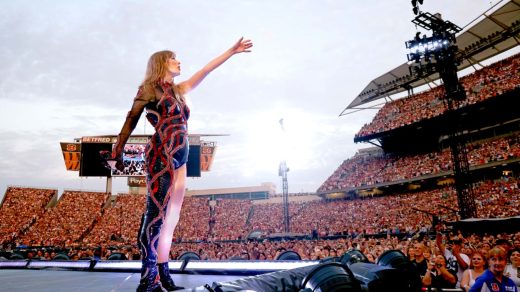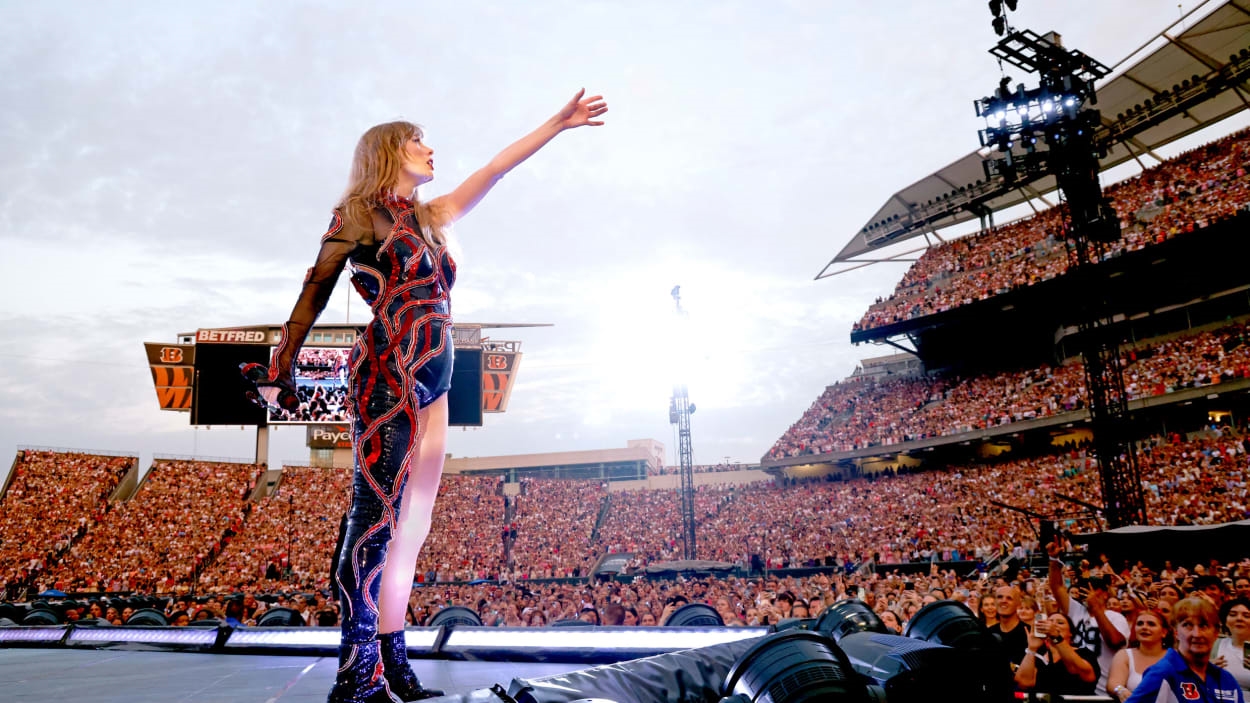Taylor Swift’s Eras Tour is a reminder that social media is not real life
By Aarushi Bhandari—The Conversation
In the weeks leading up to June 16, 2023, when I attended the Pittsburgh leg of Taylor Swift’s Eras Tour, the online chatter about the 33-year-old singer had become draining.
The internet was ablaze with rumors about Swift dating Matty Healy, the lead singer of the English pop-rock band The 1975. Some “Swifties”—the term used for die-hard Taylor Swift fans—berated the pop superstar for dating Healy, who’d become mired in controversy for appearing on a podcast whose hosts made racist comments about the rapper Ice Spice.
As the Pittsburgh leg of the tour approached, I wondered if I were about to dive headfirst into an angry mob of tens of thousands of Swifties.
On the day of the show, Acrisure Stadium was mobbed with 72,000 people, but the Swifties in attendance were far from angry.
In that moment we became deeply connected by our shared love and admiration for Swift’s music. Sociologist Emile Durkheim described this phenomenon as “collective effervescence,” the unique surge in feeling when large groups of people come together for a shared purpose.
“It was rare, I was there, I was there,” Swift belted out during “All Too Well.”
I was there, too, as life events touched by Swift flashed by: sitting at my first desktop computer as a teenager in Kathmandu, Nepal, replaying “Love Story” on LimeWire; my first week in the U.S., during the 2009 MTV Video Music Awards, when Kanye West infamously interrupted Swift; how Swift’s eighth studio album, Folklore, brought me back to life after it seemed as if the world was on the verge of imploding in 2020.
Collective delusion
The Eras Tour was not my first experience of collective effervescence. Nor was it the first time I felt such a strong disconnect between the online and offline worlds.
Right before the pandemic began, there was the painfully quiet fizzling out of the Bernie 2020 movement. As a volunteer for that campaign, I had the remarkable experience of connecting with other Americans who wanted a Bernie Sanders presidency.
I especially appreciated how this role connected me to the people who make up the Nepali diaspora in the U.S. We hoped to improve our immigrant experiences, whether it involved easier access to healthcare, or no longer fearing the deportation of loved ones.
But then repeated news cycles about “toxic Bernie Bros” seemed to drain the movement’s momentum. Mainstream media outlets reported that Sanders’s base was made up of white male cyberbullies. Negative tweets had been amplified, and the words and behaviors of a few Sanders supporters all of a sudden were being portrayed as representative of an entire movement.
The contrast between what was being said online versus my own experiences was jarring: Here I was working to find transportation for 80-year-old Nepali grandmas who didn’t speak English but wanted to vote for Sanders.
Post-election analysis would show that the Bernie Bro trope was entirely constructed; there was no evidence to show that young white men made up a majority of Sanders’s supporters. The movement, in fact, consisted of a diverse coalition of people from marginalized races and genders.
A vocal minority sets the agenda
Online narratives distort real life more often than you might realize.
Research consistently shows that a small minority of people who have social media accounts post the vast majority of content.
In what’s termed the “90-9-1 rule,” 90% of users on these websites only “lurk” or read content, 9% reply or repost with occasional new contributions, and only 1% frequently create new content.
Pioneered by Jakob Neilson, the 90-9-1 rule is one of many theories within internet studies that describe participation rates, and different scholars find support for different variations of this rule. Reddit, for example, has a billion-plus monthly active users, but according to a 2017 conference paper, an overwhelming majority of Reddit users are lurkers. X, the website and app formerly known as Twitter, had around 350 million users as of 2023; however, research from 2019 found that 75% of its users were lurkers.
In other words, most of the discussions happening on websites like Reddit and Twitter come from a vocal minority of users—whose posts are then curated and boosted by algorithms.
Nonetheless, in the past decade, the news media have increasingly constructed narratives about collective reality based on what happens on these websites.
Of course, toxic online behavior exists in all online communities. But it represents the words of a smaller minority of users within the already small minority of people who post content online. Media narratives that emphasize certain groups as toxic based on online behavior—whether they are describing fandom or politics—fall into the trap of confusing the internet with real life.
In the weeks when Swift was dating Healy, a vocal minority of Swifties came head-to-head with a vocal minority of Healy’s defenders. Then the celebrity pair ended their relationship, and collective attention moved on from that topic almost immediately.
Several weeks of nonstop debate, attacks, and hand-wringing ended up being utterly meaningless—except to social media companies that converted this brief obsession into clicks, engagement, and ad revenue.
My forthcoming book, Attention and Alienation, brings renewed focus to an increasingly demystified phenomenon: The online attention economy maximizes profits by designing algorithms that boost engagement, particularly by promoting negativity and outrage.
Oligarchy of the “extremely online”
Sometimes the consequences of mistaking the internet for real life are dire.
Take reproductive health. Online rage about the Supreme Court’s decision to overturn Roe v. Wade peaked within a few days and people moved on to different topics.
Today reports about reproductive healthcare take up very little news media space compared with garden-variety trending topics like “Barbenheimer”—the double blockbuster release of the movies Barbie and Oppenheimer on July 21.
In the real world, many people continue to suffer from lack of access to lifesaving reproductive healthcare across the U.S., while the online chattering class celebrates the radical feminism of the Barbie movie.
Perhaps it’s time to sideline social media and the internet when evaluating the nature of our collective reality. Reality exists outside of our devices, whereas social media algorithms push whatever keeps us tethered to the screen. There is little evidence to support the idea that online discourse represents collective experiences.
That might be easier said than done: 94% of journalists say they use social media for their jobs.
But as an internet researcher—and Taylor Swift fan—I am hopeful that experiences like the Eras Tour will wake up more people to the fact that human beings are more united than social media algorithms would have us believe.
Aarushi Bhandari is an assistant professor of sociology at Davidson College.
This article is republished from The Conversation under a Creative Commons license. Read the original article.
(12)



